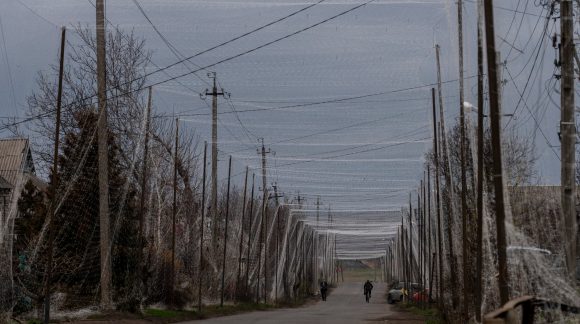The National Resistance Center (NRC) explained how the Russian occupiers manipulate historical facts in order to justify their right to seize certain lands.
The NRC stressed: as soon as Russian troops are entrenched in certain lands, the clearing of the local cultural field immediately begins there.
“The fact that Russia is now destroying Ukrainian books, looting museums, and conducting tours of the TOT is not something new – the empire has worked out these mechanisms for centuries. In Russian historiography, it is already common practice to describe the history of various regions with the narrative that civilization appeared on them only from the moment they ‘joined’ the Moscow Empire. This is according to the plan of the propagandists and justifies the Russian Federation’s right to aggressive wars,” the website of the National Resistance Center says.
The authors of the article point out that for Ukraine the example of the Crimean peninsula is very telling: the Kremlin refers to it as nothing other than “innately Russian land”.
“After the final defeat of the Crimean Khanate during the Russian-Turkish war and the consolidation of the occupation of the peninsula in 1774, 500 buildings were ‘razed to the ground’, many of them in Kerch. These buildings were examples of Mediterranean architecture, the heritage of various cultural eras from Greco-Roman antiquity to the medieval heyday of the Crimean state,” the National Resistance Center reminds, adding that even now Russia is destroying the remains of Chersonesus and the Khan’s palace in Bağçasaray.
The same thing happened in other territories of modern Ukraine which were once controlled by the Russian Empire.
Namely, as soon as Catherine II eliminated the Zaporizhia Sich, and with it all the remnants of the Hetman’s autonomy, Moscow chroniclers eagerly began to rewrite the history of Ukrainian lands. So, one by one, myths began to appear about the “founding empress”, who built a bridge in the “Wild Field”.
“According to one of them, she allegedly built Luhansk from scratch in 1795, although 100 years before that there were Ukrainian Cossack settlements of Kamiany Brid and Vergunka. Namely, how the city of Luhansk was formed in 1882. Not only that, it was Catherine II who turned local Cossacks and peasants who had never known slavery into serfs-slaves,” the authors of the article note.
The National Resistance Center also recalls that for Donetsk oblast, Soviet historiographers nurtured the myth of Donbas – an industrial crucible to which “Russian tsars brought civilization.” The core of local industry was created by investors from Europe and Ukrainian tycoons, and labor resources were recruited from the settlements already present there.
Mariupol is an example of this. In 1779, the same Catherine “gave the emigrants from Crimea privileges and freedom.”
“If we translate from the imperial newspeak, this is a special settlement created for the Greeks of Rumei and Urum who were deported from the peninsula, and also on the lands of the old Kalmius fortress of the Zaporozhian Cossacks Domakh, founded in 1594.,” the CNS explains.
As for Odessa, the myth about Catherine and Potemkin is still popular, bypassing the fact that before the Russians there were a number of settlements on the territory of the ancient Odessa. In particular, the ancient Ukrainian fortress of Kotsyubiiv, founded by the noble magnate Kotsyuba-Yakushinsky in 1415. It was then that the famous Peresyp was formed. It was during the period of the Grand Duchy of Lithuania, Russia and Zhemaitia during the reign of Prince Vytautas.


